On April 5, 1905, the Kansas City Star ran the following post about a lost cat: “Large and intensely black; thick, velvety fur; has a faint fringe of white hair across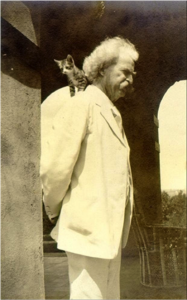 his chest; not easy to find in ordinary light.” The author of this advertisement? None other than Samuel Clemens, otherwise known as Mark Twain, himself. Though this specific ad was about his beloved cat Bambino, Twain collected a variety of other cats throughout the years as well. He loved cats so much that he once said, “I simply can’t resist a cat, particularly a purring one. They are the cleanest, cunningest, and most intelligent things I know, outside of the girl you love, of course.” Twain, however, is not the only writer who fancied feline friendship.
his chest; not easy to find in ordinary light.” The author of this advertisement? None other than Samuel Clemens, otherwise known as Mark Twain, himself. Though this specific ad was about his beloved cat Bambino, Twain collected a variety of other cats throughout the years as well. He loved cats so much that he once said, “I simply can’t resist a cat, particularly a purring one. They are the cleanest, cunningest, and most intelligent things I know, outside of the girl you love, of course.” Twain, however, is not the only writer who fancied feline friendship.
Ernest Hemingway also enjoyed the companionship of cats. He had a six-toed white cat named Snowball, among others. Cats even made their way into his famous work For Whom the Bell Tolls: “No animal has more liberty than the cat, but it buries the mess it makes. The cat is the best anarchist.” 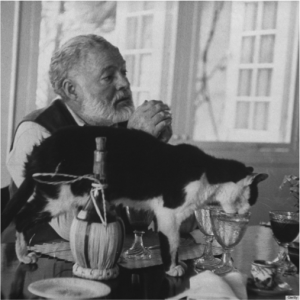 To this day, visitors can find more than 50 six-toed (polydactyl, to use the technical term) cats roaming around Hemingway’s home in Key West. It is said that they are the descendants of dear old Snowball.
To this day, visitors can find more than 50 six-toed (polydactyl, to use the technical term) cats roaming around Hemingway’s home in Key West. It is said that they are the descendants of dear old Snowball.
Joyce Carol Oates has even gone as far as crediting her cat for helping her write. She has said, “I write so much because my cat sits on my lap. She purrs so I don’t want to get up. She’s so much more calming than my husband.”
So what is it with writers and their cats? Why do so many choose to spend their time with those of the feline persuasion? Perhaps, as Oates said, cats encourage writing with their refusal to be dislodged from their resting places. Maybe they dissuade writers’ block with their mysterious air and playful antics. I certainly find cats to be the ideal writing companions. Their warm bodies create a cozy environment and their purring has a calming effect, making for a low-stress writing atmosphere. I can see this being the reason that authors for generations have adored their meowing muses.
It isn’t only cats that steal a place in writers’ hearts, however. Canine companions have been just as present throughout history. Emily Brontë, a great animal lover, had a trusty mastiff sidekick named Keeper. Some even argue that Emily’s adoration of all creatures influenced her writing in Wuthering Heights, as many characters in the novel have quite animalistic qualities. Her contemporary, Emily Dickinson, also had a love for dogs. Dickinson once said, “Dogs are better than human beings because they know but do not tell.”
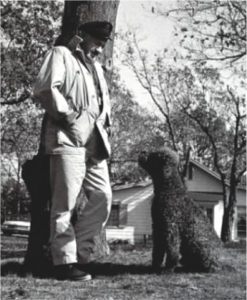 A more recent writer shared his predecessors’ preference for pups. Aldous Huxley, author of Brave New World, once explained “the constant popularity of dogs” by saying, “To his dog, every man is Napoleon.” This quote could explain why some writers keep pooches as pets. Take a survey of any authors and chances are some are going to say they write because they want to make an impact on their readers or even on the world. Perhaps F. Scott Fitzgerald put it best when he said, “You don’t write because you want to say something; you write because you’ve got something to say.” Keeping a dog as a pet allows authors to experience that feeling of heroism on a smaller scale.
A more recent writer shared his predecessors’ preference for pups. Aldous Huxley, author of Brave New World, once explained “the constant popularity of dogs” by saying, “To his dog, every man is Napoleon.” This quote could explain why some writers keep pooches as pets. Take a survey of any authors and chances are some are going to say they write because they want to make an impact on their readers or even on the world. Perhaps F. Scott Fitzgerald put it best when he said, “You don’t write because you want to say something; you write because you’ve got something to say.” Keeping a dog as a pet allows authors to experience that feeling of heroism on a smaller scale.
Or maybe writers simply have dogs because they bring a certain level of joy that encourages the writing process. Jonathan Safran Foer, author of Extremely Loud and Incredibly Close, asked, “Why does watching a dog be a dog fill one with happiness?” Just as cats inspire writers with their furtiveness, dogs can hearten writers’ work with their blatantly unconditional love and loyalty. Conversely, dogs can reveal the negative side of human nature as well. As John Steinbeck said after years with his treasured poodle, Charley, “I’ve seen a look in dogs’ eyes, a quickly vanishing look of amazed contempt, and I am convinced that basically dogs think humans are nuts.” While dogs do not necessarily create the same relaxed atmosphere that cats do, I find their constant cheerfulness to be a definite mood-booster, something that always helps with my writing.
Dogs and cats are not the only pets that have kept famous writers company, however. Lord Byron, 19th century poet, housed a pet bear during his time at Cambridge, even walking it through campus on a leash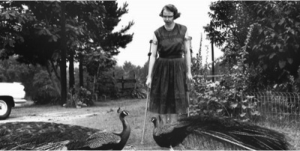 . And let us not forget about Flannery O’Connor and the famed peacocks that kept her company. She once wrote of them, “Visitors to our place, instead of being barked at by dogs rushing from under our porch, are squalled at by peacocks whose blue necks and crested heads pop up from behind tufts of grass, peer out of bushes, and crane downward from the roof of the house, where the bird has flown, perhaps for the view.”
. And let us not forget about Flannery O’Connor and the famed peacocks that kept her company. She once wrote of them, “Visitors to our place, instead of being barked at by dogs rushing from under our porch, are squalled at by peacocks whose blue necks and crested heads pop up from behind tufts of grass, peer out of bushes, and crane downward from the roof of the house, where the bird has flown, perhaps for the view.”
So, while many authors may use historical figures or real-life acquaintances for inspiration in their writing, some turn instead to their furrier pals, giving a new perspective on the phrase “man’s best friend.”
— Cara Scott

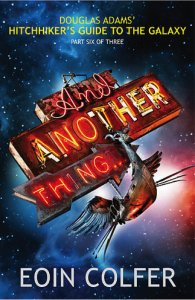
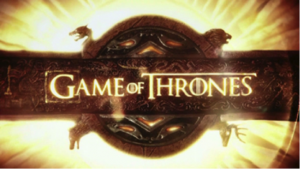

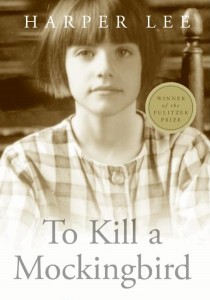
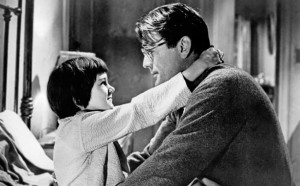
 deos of the passionate rhymes, personal stories, and well-placed f-bombs that general characterize a slam poem. Some nondescript night last year, I began a homework-avoiding binge of YouTube slams that led me to Dylan Garity’s “
deos of the passionate rhymes, personal stories, and well-placed f-bombs that general characterize a slam poem. Some nondescript night last year, I began a homework-avoiding binge of YouTube slams that led me to Dylan Garity’s “ I simply have such an appreciation for a medium that can so transform the way people see and become influenced by the arts, that I want to share it with others. I spend an immense amount of time finding videos and pictures and content on the Internet finding art. Sites like Pinterest, Stumble Upon, Tumblr, and yes, YouTube make arts more available, popular, and most importantly, experienced. I don’t have to visit a museum or gallery to appreciate a painting, because what’s most interesting to me is discovering a whole new art through the vessel of the web.
I simply have such an appreciation for a medium that can so transform the way people see and become influenced by the arts, that I want to share it with others. I spend an immense amount of time finding videos and pictures and content on the Internet finding art. Sites like Pinterest, Stumble Upon, Tumblr, and yes, YouTube make arts more available, popular, and most importantly, experienced. I don’t have to visit a museum or gallery to appreciate a painting, because what’s most interesting to me is discovering a whole new art through the vessel of the web.